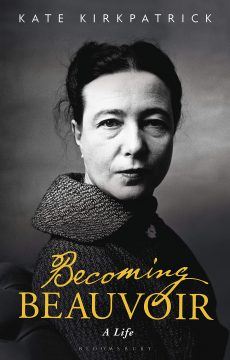Skye C. Cleary in the Los Angeles Review of Books:
 Writers always have to make difficult choices about what to leave in and what to cut from their work. The choices become especially acute when a writer is telling her own story. “What an odd thing a diary is,” a character in Simone de Beauvoir’s novel The Woman Destroyed (La Femme rompue, 1967) says, “the things you omit are more important than those you put in.”
Writers always have to make difficult choices about what to leave in and what to cut from their work. The choices become especially acute when a writer is telling her own story. “What an odd thing a diary is,” a character in Simone de Beauvoir’s novel The Woman Destroyed (La Femme rompue, 1967) says, “the things you omit are more important than those you put in.”
The statement seems to be more personal confession than fiction. Exploring the mysteries and misconceptions about Simone de Beauvoir (1908–1986) — one of the most underappreciated of philosophers — is the project of the new biography Becoming Beauvoir: A Life by Kate Kirkpatrick. Certainly, Beauvoir’s life story is not entirely new. Not only did she publish memoirs, travelogues, diaries, and letters, but Deirdre Bair published a 700-page biography in 1990 (Simone de Beauvoir: A Biography), drawing on five years’ worth of discussions with Beauvoir, often starting at 4 p.m. sharp, with an ounce of scotch served in Mexican glass tumblers. There have been other biographies, too, such as Hazel Rowley’s Tête-à-Tête: The Tumultuous Lives and Loves of Simone de Beauvoir and Jean-Paul Sartre (2005), and Lisa Appignanesi’s brief portrait (titled Simone de Beauvoir), published in 1988.
However, since these biographies came out, new material has been released, notably Beauvoir’s student diaries (Cahiers de jeunesse: 1926–1930, published in 2008) and her love letters to Claude Lanzmann (published in 2018), which throws previous accounts of her life and thinking into question.
More here.
